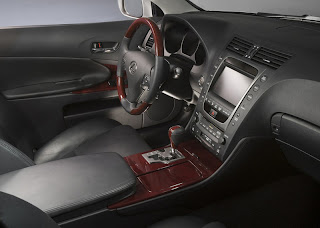Suzuki Grand Vitara, 2009
Suzuki Grand Vitara surpasses other SUVs in its size and price category in balancing off-road capability with the very real needs of a daily commute. The vehicle's surprising off-road performance is matched by an equally impressive interior, making the Grand Vitara the perfect choice for adventure-minded drivers seeking to confidently explore the outside world in comfort and style. The ultimate discovery vehicle, the Suzuki Grand Vitara helps customers engage directly with their environment and their experiences.
For 2009, the rugged and award-winning Suzuki Grand Vitara, a true SUV in a segment of "soft-roaders," offers "brute-ute" owners the opportunity to resize for better fuel economy without settling for a "cute-ute" lacking full SUV capability. A standard, all-new four-cylinder engine provides drivers with better mileage, and a new, more powerful V6 delivers fuel economy better than the V6 it replaces.
A new grille and front bumper design accent the Suzuki Grand Vitara distinctive, chiseled-yet-elegant lines, with additional interior enhancements, including illuminated steering wheel controls, a sliding front center armrest, visor extenders, HVAC controls, upgraded audio system and updated cloth upholstery. As with all retail 2009 Suzuki automobiles and light trucks, the Grand Vitara is backed by America's #1 Warranty: a 100,000-mile/seven-year, fully transferable, zero-deductible powertrain limited warranty.
Performance and Functionality
The new Suzuki-developed 2.4-liter four-cylinder engine produces 166 horsepower and 162 lb.-ft. of peak torque, delivering EPA fuel economy estimates of up to 19 mpg/city and 26 mpg/highway. Available for Suzuki Grand Vitara XSport and Luxury models is a new 3.2-liter V6 engine with 230 horsepower and 213 lb.-ft. of torque, replacing the 2.7-liter V6 engine in 2008 Grand Vitara that produced 185 horsepower and 184 lb.-ft. of torque. Despite an increase of 45 horsepower, the new V6 betters the old motor in fuel economy ratings. The new engine is also 20 percent cleaner than the 2008 model as measured by the State of California's smog index rating. The new V6 also features variable valve timing for both the intake and exhaust camshafts, and both Suzuki Grand Vitara engines use a zero-maintenance timing chain in place of a belt.
The Grand Vitara's new four-cylinder engine can be teamed to a standard five-speed manual transmission or a new four-speed automatic transmission, while the V6 is matched to a standard five-speed automatic transmission. To help fulfill their sense of adventure, customers can choose among RWD models, Single-Mode four-wheel drive or Four-Mode full-time four-wheel drive, a traction system unlike anything else offered in the segment. The Electronic Stability Program (ESP) is standard for all Suzuki Grand Vitara models, along with a new rollover sensor for the standard side curtain airbags. Enhancing performance on any road is a strengthened structure for 2009, plus rear disc brakes that replace the previous drums.
Suzuki Four-Mode four-wheel drive offers the best of both worlds: further aided by a completely retuned suspension, it is exceptionally capable off-road but is civilized on the asphalt. On pavement, drivers can leave the dash-mounted transfer case switch in 4H and the electronically controlled on-demand four-wheel-drive system will apply traction to the front wheels only as needed, optimizing economy. When traveling off-road, or for low-speed power and traction, drivers can turn the switch to high-range 4H Lock or low-range 4L Lock to engage the center differential lock. The V6 models with Four-Mode full-time four-wheel drive also feature Hill Descent Control and Hill Hold Control, which can enhance driving safety on steep slopes.
For RV owners, a Suzuki Grand Vitara equipped with an automatic transmission or with the Four-Mode full-time four-wheel-drive system can also be flat-towed. Switching the transfer case control into the neutral position helps minimize driveline wear and prevent non-driving miles from accumulating on the odometer.





















